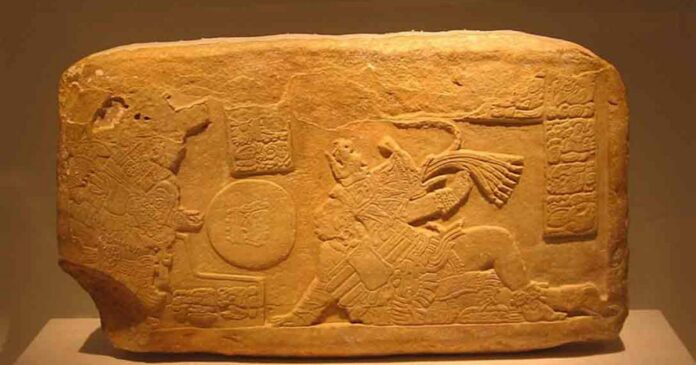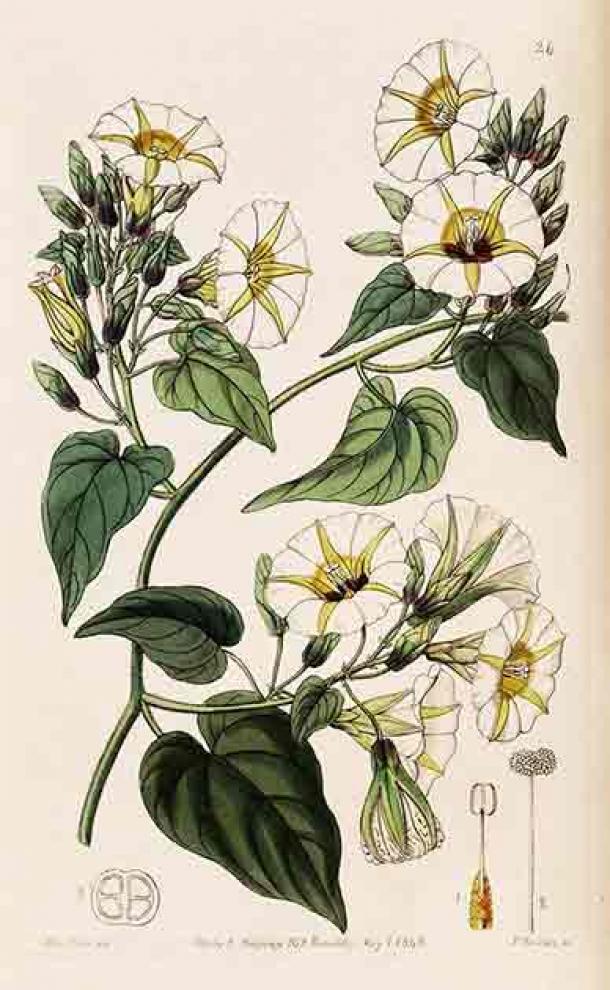Unveiling the Maya: Hallucinogens and Rituals Beneath the Yucatán Ball Courts

The Significance of Ball Games in Maya Culture

In Maya society, ball games like pok-a-tok and pelota were more than mere recreational activities. These games were deeply intertwined with religious practices and often took place in arenas situated near significant temples. The ballcourt at Yaxnohcah, where the recent discovery was made, serves as a testament to the spiritual importance of these games. The archaeological research, conducted by Mexico’s National Institute of Anthropology and History in collaboration with scholars from the University of Calgary, the Autonomous University of Campeche, and the National Autonomous University of Mexico, aimed to uncover the rituals associated with the construction and use of this ancient ballcourt.
Goodwill of the Gods: Seeking Divine Blessings

The research began when archaeologists noticed a large, dark stain in the soil of the ballcourt, prompting further investigation. Samples were meticulously collected and preserved to ensure their integrity for analysis. The environmental DNA analysis revealed the presence of four plant species, each with recognized religious and medicinal properties, frequently used by the Maya. Among these plants was xtabentun, a species of morning glory known for its hallucinogenic properties. Additionally, lancewood and chili peppers were identified, all of which were wrapped in the leaves of the jool plant—a common practice in Maya rituals.
According to Professor David Lentz, a study author, the Maya performed rituals to seek the goodwill of the gods when constructing new buildings. This practice, often referred to as an “ensouling ritual” or “fix earth” ritual, was intended to bless and protect the structure and its inhabitants. The discovery of these botanical remains suggests that such rituals were conducted at the ballcourt in Yaxnohcah, symbolizing a request for divine favor in the activities that would take place there.
Xtabentun and Chili Peppers: Hallucination and Healing

The discovery of xtabentun is particularly significant due to its hallucinogenic properties. This flowering vine, native to Mexico and Central America, contains seeds with psychedelic compounds similar to LSD. The use of xtabentun in Maya rituals suggests that it may have been employed for divination or to facilitate communion with deities. Additionally, chili peppers, revered in Maya tradition for their healing properties, were also part of the offering. These plants’ presence indicates a complex ritual aimed at both spiritual and physical well-being.
The study authors propose that the collection of these botanicals may have been intended for a divination ritual or as part of an ensouling ceremony to ensure the gods’ blessings. Despite the challenges of interpreting ancient practices, this discovery offers a unique glimpse into the spiritual life of the Maya and the role of hallucinogens in their religious ceremonies.
Conclusion
The findings at the Yaxnohcah ballcourt provide a fascinating window into the religious and cultural practices of the ancient Maya. The use of hallucinogenic plants in rituals underscores the deep connection between spirituality and daily life in this ancient civilization. As researchers continue to explore these archaeological sites, we gain a richer understanding of the Maya’s intricate relationship with their deities and the natural world. The study not only highlights the significance of ball games in Maya society but also opens new avenues for exploring the complex interplay of religion, politics, and recreation in ancient cultures.
Video
News
The Hanging Temple: China’s 1,500-Year-Old Cliffside Marvel of Faith and Engineering
The Hanging Temple: China’s 1,500-Year-Old Cliffside Marvel of Faith and Engineering Perched precariously on the cliffs of Mount Heng in Shanxi Province, China, the Hanging Temple, also known as Xuankong Temple, Hengshan Hanging Temple, or Hanging Monastery, is an architectural…
The Willendorf Venus: A 30,000-Year-Old Masterpiece Reveals Astonishing Secrets
The Willendorf Venus: A 30,000-Year-Old Masterpiece Reveals Astonishing Secrets The “Willendorf Venus” stands as one of the most revered archaeological treasures from the Upper Paleolithic era. Discovered in 1908 by scientist Johann Veran near Willendorf, Austria, this small yet profound…
Uncovering the Oldest Agricultural Machine: The Threshing Sledge’s Neolithic Origins
Uncovering the Oldest Agricultural Machine: The Threshing Sledge’s Neolithic Origins The history of agricultural innovation is a fascinating journey that spans thousands of years, and one of the earliest known agricultural machines is the threshing sledge. Recently, a groundbreaking study…
Nara’s Ancient Sword: A 1,600-Year-Old Protector Against Evil Spirits
Nara’s Ancient Sword: A 1,600-Year-Old Protector Against Evil Spirits In a remarkable discovery that has captured the attention of archaeologists and historians alike, a 7.5-foot-long iron sword was unearthed from a 1,600-year-old burial mound in Nara, Japan. This oversized weapon,…
The Inflatable Plane, Dropped Behind the Lines for Downed Pilots
Experimental The Inflatable Plane, Dropped Behind the Lines for Downed Pilots The Inflatoplane from Goodyear was an unconventional aircraft developed by the Goodyear Aircraft Company, a branch of the renowned Goodyear Tire and Rubber Company, also famed for the Goodyear…
USS New Jersey – Black Dragon
Battleships, Latest USS New Jersey – Black Dragon The USS New Jersey (BB-62) is an Iowa-class battleship that has seen combat in World War II, the Korean War, the Vietnam War, and the Lebanese Civil War, making her one of the…
End of content
No more pages to load











